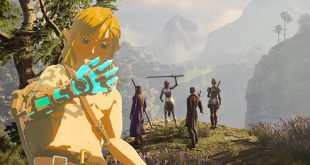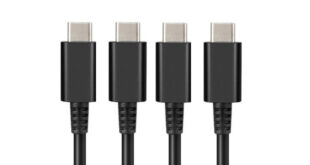In 1987 Nintendo introduced European gamers to The Legend of Zelda.
The title was unique in the way that it combined action, adventure, exploration and even a basic levelling up system.
It also introduced gamers to the boy hero Link, the evil king Ganon, the princess Zelda and the land of Hyrule – characters and worlds that would define the series for 25 years.
From here on out the series would grow and grow in popularity, often changing in tone and graphical style. Each game received critical acclaim – even the black sheep of the Zelda family, the underrated Zelda II.
There was a few hiatus on the way. It was almost five years between the second Zelda and the third one. Likewise, Ocarina of Time arrived following another five-year gap for the series.
Outside of the main franchise, the Zelda series has spawned a number of spin-off titles – although nothing like Mario. These include 2007 Wii budget game Link’s Crossbow Training, and a DS title starring the irritation Wind Waker and Majora’s Mask oddity Tingle.
There was also a trilogy of games released for the Phillips CDi. These games were terrible, and although officially licensed, were created with next to no input from Nintendo. Link: The Faces of Evil, Zelda: The Wand of Gamelon and Zelda’s Adventure are not counted as part of the official Zelda series.
Below, as part of our week long celebration of The Legend of Zelda, we run through the main games in The Legend of Zelda series.
1987 –
The Legend of Zelda
The groundbreaking NES original introduced gamers to the boy hero Link in his bid to find the Triforce, defeat the evil Ganon and save Princess Zelda. Fans can get hold of a copy quite easily over the Wii Virtual Console.
1988 –
Zelda II: The Adventure of Link
One year later the first sequel arrived, with Link on the hunt for the Triforce of Courage. The game included side-scrolling gameplay, and as a result is often seen as the black sheep of the Zelda series. It is also available over the Wii Virtual Console.
1992 –
The Legend of Zelda: A Link to the Past
The iconic SNES title returned to the first game’s top-down view, and featured two worlds – light and dark. It is also available to download via the Wii Virtual Console.
1993 –
The Legend of Zelda: Link’s Awakening
Heralded as one of the greatest portable games ever, Nintendo managed to squeeze the Zelda formula onto a Game Boy cartridge. Link must wake the Wind Fish to escape Koholint Island. A colour version of the game, featuring a new dungeon, was released in the UK in 1998. It can be downloaded via the Nintendo eShop.
1998 –
The Legend of Zelda: Ocarina of Time
Widely accepted as the greatest game ever, Ocarina of Time rendered Link in 3D for his N64 debut. It’s been re-released a few times and can be downloaded via the Wii Virtual Console.
2000 –
The Legend of Zelda: Majora’s Mask
Ocarina of Time’s sequel was a darker and more intimate affair, with a moon on a collision course with the land of Termina. It is available to download now via the Wii Virtual Console.
2001 –
The Legend of Zelda: Oracle of Seasons & Oracle of Ages
These two Capcom-developed Zelda games for Game Boy Color could be played in any order, but then linked together for the final, ultimate showdown.
2003 –
The Legend of Zelda: The Wind Waker
This acclaimed GameCube game boasted beautiful cel-shaded visuals. In the adventure Link took to the seas to save his sister, and discovered the lost kingdom of Hyrule in the process.
The Legend of Zelda: A Link To The Past & Four Swords
Four Swords was the first ever multiplayer Zelda game and was introduced as part of the remake of A Link To The Past on Game Boy Advance.
2004 –
The Legend of Zelda: The Minish Cap
Finally Zelda fans could find out how Link got his iconic green hat. Our hero shrinks down to miniature size in a game that acted as a prequel to the
two Four Swords games.
2005 –
The Legend of Zelda: Four Swords Adventures
Four Swords’ sequel was a GameCube release. Up to four players could use the Game Boy Advance as a controller and a second screen to defeat Shadow Link and the real villain, Ganon
2006 –
The Legend of Zelda: Twilight Princess
Link discovered his inner beast and hero in this adventure. The GameCube and Wii title featured a more mature visual style. It is available now on Wii as part of Nintendo’s Selects range.
2007 –
The Legend of Zelda: Phantom Hourglass
Wind Waker’s 3D?cel-shaded visuals returned for Zelda’s DS debut. Using intuitive touch screen controls, players had to travel the Great Sea to save Link’s friend Tetra.
2009 –
The Legend of Zelda: Spirit Tracks
When Zelda’s body is taken, leaving just her spirit behind, Link must team up with the princess in this sequel to Phantom Hourglass, which swaps boats for steam trains.
2011 –
The Legend of Zelda: Ocarina of Time 3D
The 1998 classic is back on Nintendo 3DS. Fans and newcomers can rediscover the epic adventure in remarkable 3D, with improved visuals and the addition of the Master Quest.
The Legend of Zelda: Four Swords: Anniversary Edition
This game is an updated version of the original Four Swords.
It is available to download for free via the Nintendo eShop for both DSi and 3DS until February 20th.
The Legend of Zelda: Skyward Sword
The biggest Zelda game ever will include Wii MotionPlus controls when it is released on November 18th. It acts as a prequel to Ocarina of Time and boasts fully orchestrated music.

 MCV/DEVELOP News, events, research and jobs from the games industry
MCV/DEVELOP News, events, research and jobs from the games industry



